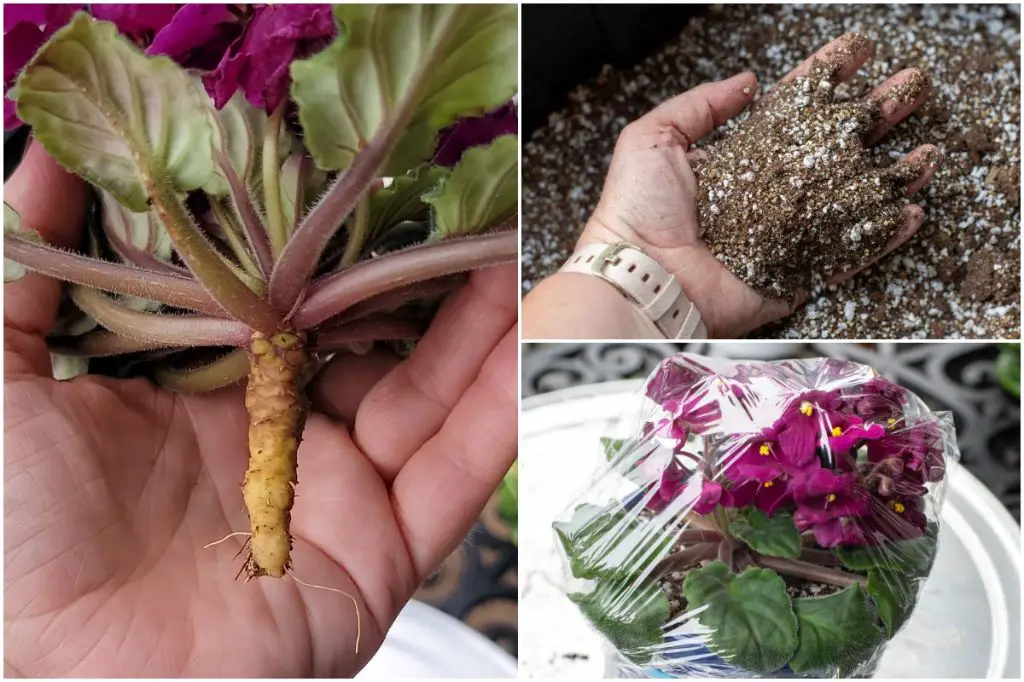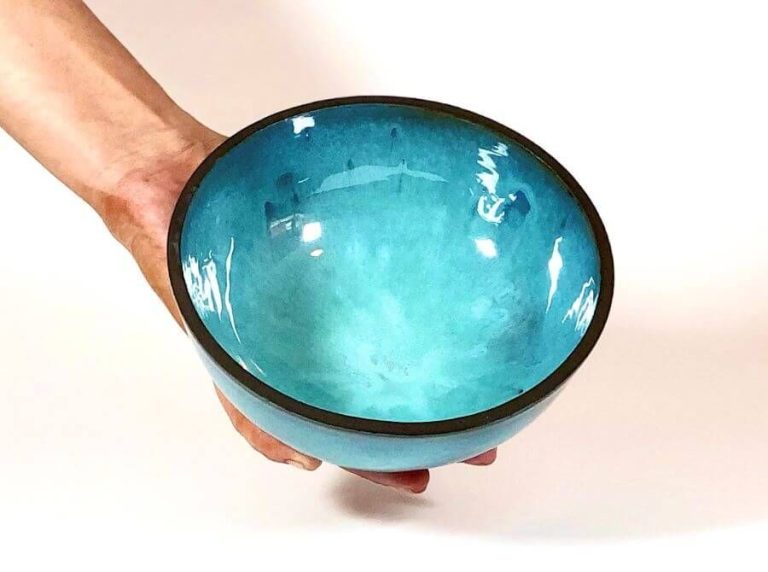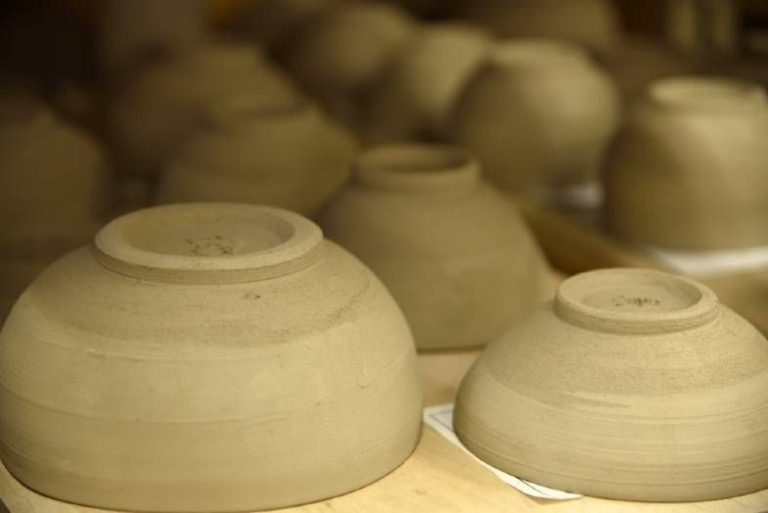What Pots Are Best For African Violets?
African violets (Saintpaulia) are a popular houseplant known for their colorful flowers and ease of care. Selecting the right pot is crucial for growing healthy African violets that thrive and bloom abundantly. The pot affects drainage, watering frequency, growth, and overall plant health. With the proper pot, African violets will reward you with exotic blooms to enjoy indoors.
Drainage
Drainage is critical for African violet pots because these plants thrive in moist (not wet) soil and are prone to root rot if left in standing water. According to the African Violet Society of America, “An African violet pot must have holes in the bottom to allow excess water to drain away from the roots. If you use a decorative outer pot, make sure it has drainage as well or the inner pot will sit in water” (source). Holes along the sides of the pot can also improve drainage. A good quality potting mix that retains some moisture while still draining well is ideal.
Allowing excess water to accumulate at the roots not only risks rot, but can prevent oxygen from reaching the roots which African violets require. Insufficient drainage leads to yellowing or wilting leaves and eventual death of the plant if the issue is not corrected by repotting in a pot with adequate drainage. Choose pots with multiple bottom holes or slots and avoid any decorative pots that may clog or impede drainage.
Material
The material used for an African violet pot is an important consideration. Plastic, ceramic, and glass are common pot materials, each with pros and cons.

Plastic pots are lightweight, inexpensive, and come in many sizes and colors. The drainage holes in plastic pots can be precisely molded. However, plastic retains moisture and does not allow the soil to dry out as quickly between waterings, which African violets prefer. Plastic pots are also prone to becoming brittle and cracked over time.
Ceramic pots allow the soil to dry properly between waterings and come in attractive styles. However, ceramic is heavier and costs more than plastic. Ceramic pots may have rough or uneven drainage holes that can scrape roots. Unglazed terra cotta pots in particular draw moisture from the soil.
Glass pots let in light to stimulate root growth. They showcase the plant and allow monitoring of the soil moisture level. But glass pots are heavy, slide easily, and offer limited drainage hole options. Temperature changes are magnified in glass, and salts can build up on the pot.
The best material combines the drainage and air flow of ceramic with the light weight and precise holes of plastic, at an affordable cost. Pot material also depends on the climate and how frequently the plant will be watered.
Size
The ideal pot size for African violets depends on the size and maturity of the plant. For standard or mature African violet plants, pots between 3-4 inches in diameter are recommended. According to Baby Violets, “If you have a standard / large African Violet plant, the ideal pot size is between 3′′- 4′′ pots. Standards maximum diameter is 12′′ across.”
For mini and semi-mini African violet varieties, smaller pots between 2-3 inches in diameter are ideal. The African Violet Resource Center advises, “If you have a standard African violet plant, your starter pot should be about 3-4 inches in diameter.”
In general, it’s best to start African violet plants in smaller pots and then repot or move them to incrementally larger pots as the plant grows. Avoid putting young plants directly into large pots, as this can cause issues with soil moisture retention and drainage. A good rule of thumb is to move up just 1 inch at a time when repotting into larger pots.
Shape
The optimal pot shape for African violets is one that is wider than it is tall. A wide, shallow pot allows for a larger surface area exposed to light, which African violets need to thrive. Choosing a squat, low pot over a tall, narrow one can make a big difference in an African violet’s growth and blooming.
Some ideal pot shapes for African violets include:
– Rounded or oval pots that are wider than they are tall
– Low bowls or saucers
– Squat bulb pans
Avoid using tall pots or pots with narrow openings, as these limit light exposure for the leaves. While African violets can be grown in a variety of container shapes, wide, shallow pots optimize light absorption and promote lush, healthy plants.
Source: https://africanvioletsocietyofamerica.org/learn/violets-101/pots/
Weight
The weight of the pot is an important consideration for African violets. A heavy pot helps provide stability and prevent the plant from tipping over. However, the pot should be balanced with the size and weight of the plant. A pot that is too heavy for the plant can cause damage to the roots when moving or repotting the plant. Generally, a 4-5 inch pot should weigh about 1-2 lbs when empty for a medium to large African violet.
Heavier clay or ceramic pots are recommended over lightweight plastic pots, which can easily tip over. But the pot should not be so heavy that it’s difficult to move. An overly heavy pot puts unnecessary stress on the plant when transporting or rotating it. A good rule of thumb is that the pot should weigh about the same amount as the plant itself.
Aim for a harmonious balance between the pot weight and the size of the plant. This provides stability without overburdening the roots. Monitor the plant for signs of distress like yellowing or wilting leaves, which could indicate an excessively heavy pot.
Color
The color of an African violet pot impacts the temperature of the roots and growth of the plant. Darker colors like black, brown and deep red tend to absorb heat, raising the root temperature. This extra warmth encourages faster growth. However, the soil can dry out more quickly in a dark pot. On the other hand, light colors like white reflect heat and keep roots cooler, resulting in slower growth. But the soil remains moist longer in a lighter pot.[1]
When choosing a color, it’s best to match it to the temperature and humidity of your growing environment. If growing indoors in a cool room, a darker pot helps maintain a warmer root zone. In a very warm location, a light colored pot prevents overheating. Most growers recommend a neutral terracotta or green pot for average household conditions. Avoid clear and transparent pots, as sunlight passing through can scorch roots.[2]
Design
The design and look of the pot you choose for your African violet can make a big difference in its visual appeal. You’ll want to consider if a decorative pot or a plain pot is best. Decorative pots come in a wide variety of colors, shapes, materials, and artistic designs. These kinds of pots can complement the beautiful blooms and add striking visual interest to your African violet displays. However, plain pots in basic shapes and neutral colors help spotlight the plant itself rather than drawing attention away.
Self-watering pots are another design option to consider. These pots have built-in reservoirs at the bottom to provide a constant supply of water. Self-watering pots for African violets often have wicks that draw water up to the soil and roots as needed. This can make caring for your African violet easier by eliminating the need to water as frequently. Just be sure any self-watering pot you choose has adequate drainage holes as well, since African violets are prone to root rot if overwatered.
Soil
The soil is one of the most important factors for successfully growing African violets. The ideal soil for African violets is light, porous, and fast-draining. This allows oxygen to reach the roots while preventing overwatering.
A common recommended soil mixture is 1 part peat moss, 1 part perlite, and 1 part vermiculite. According to African Violet Resource Center, “While you’ll find dozens of African violet soil recipes online, nearly all contain three key ingredients: perlite; vermiculite; and peat moss.”1 The peat moss provides moisture retention, the perlite improves drainage and aeration, and the vermiculite provides nutrients.
You can also purchase pre-mixed African violet potting soil, but homemade mixes allow you to control the ratio of ingredients. Avoid regular potting soil, as it often retains too much moisture. The optimal pH for African violet soil is between 6.4 and 6.8.
Re-pot African violets annually with fresh soil to provide nutrients. And take care not to compact the soil, which reduces air pockets.
Conclusion
In summary, the key tips for choosing the best pots for African violets are:
- Select pots with adequate drainage holes to prevent root rot.
- Plastic, ceramic, terra cotta, and glazed pots work well, avoiding metal containers.
- Opt for 4-6 inch pots for a single plant or 8-10 inches for multiple plants.
- Round and squarish pots allow ample root development.
- Lightweight pots are better for moving plants or hanging displays.
- Neutral colored pots keep the focus on the plants.
- Plain, simple pots showcase the flowers and foliage best.
- Use an open, well-draining soil mix specifically for African violets.
Following these guidelines will help ensure your African violets thrive in the optimal containers.



